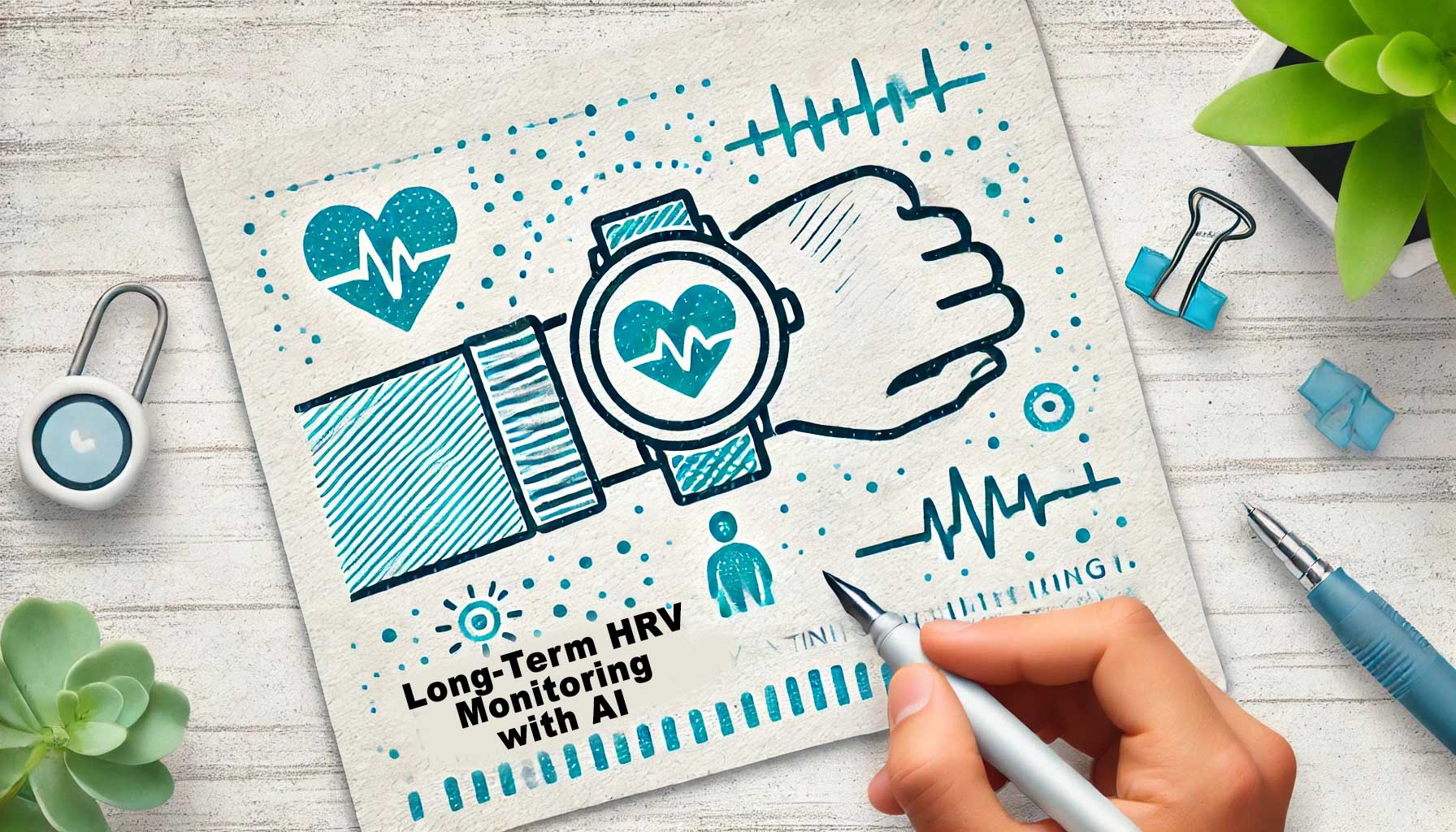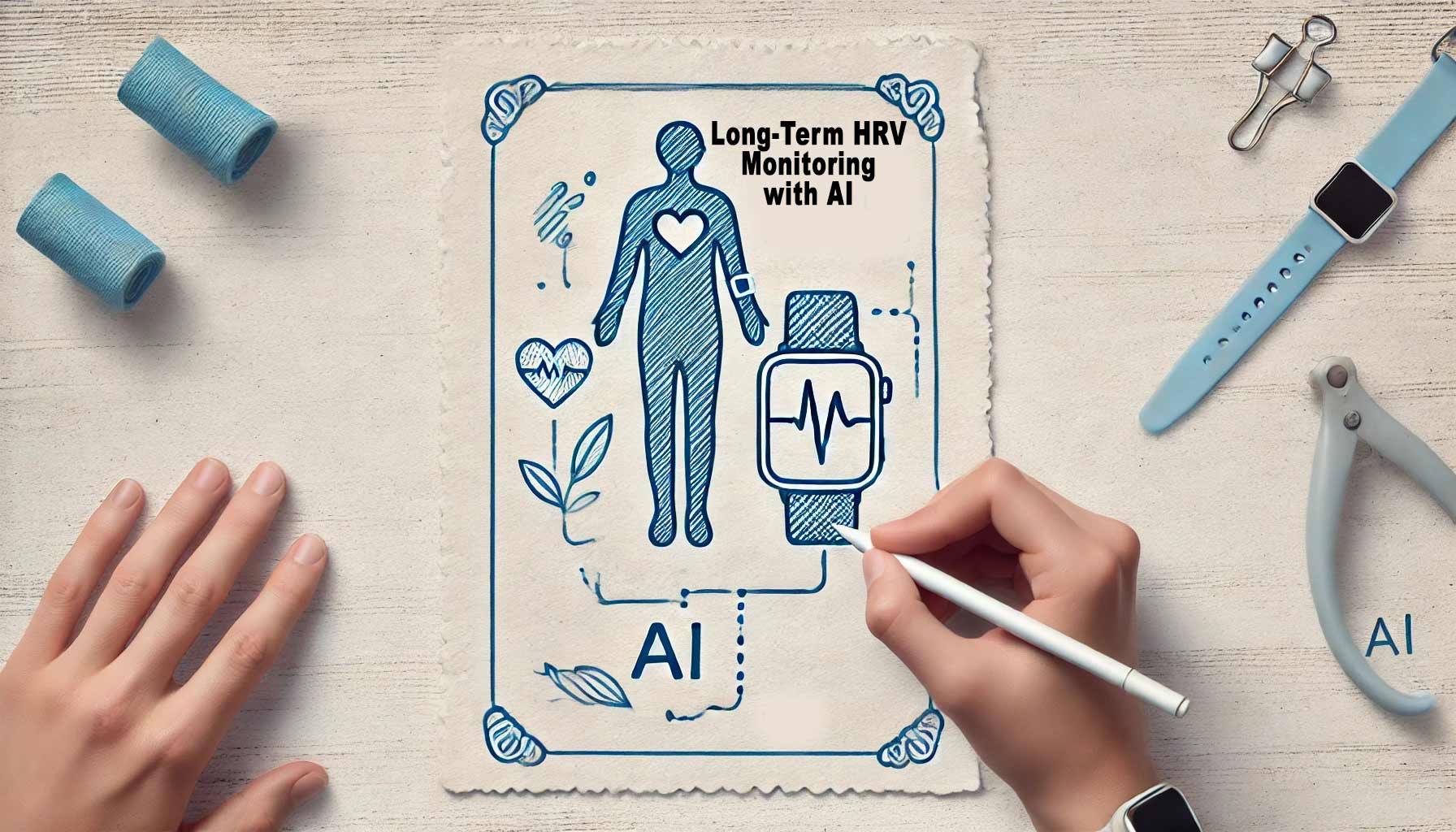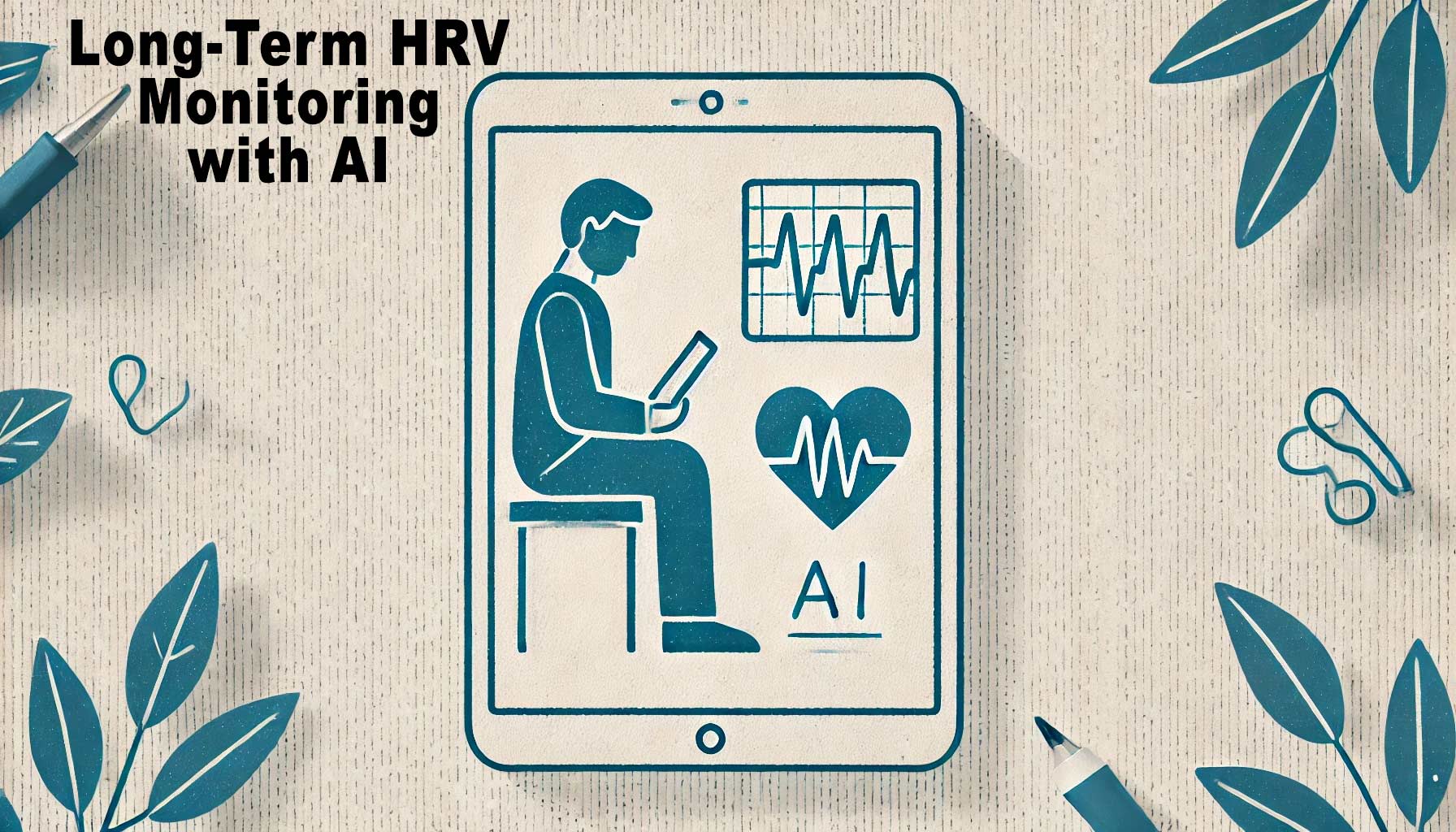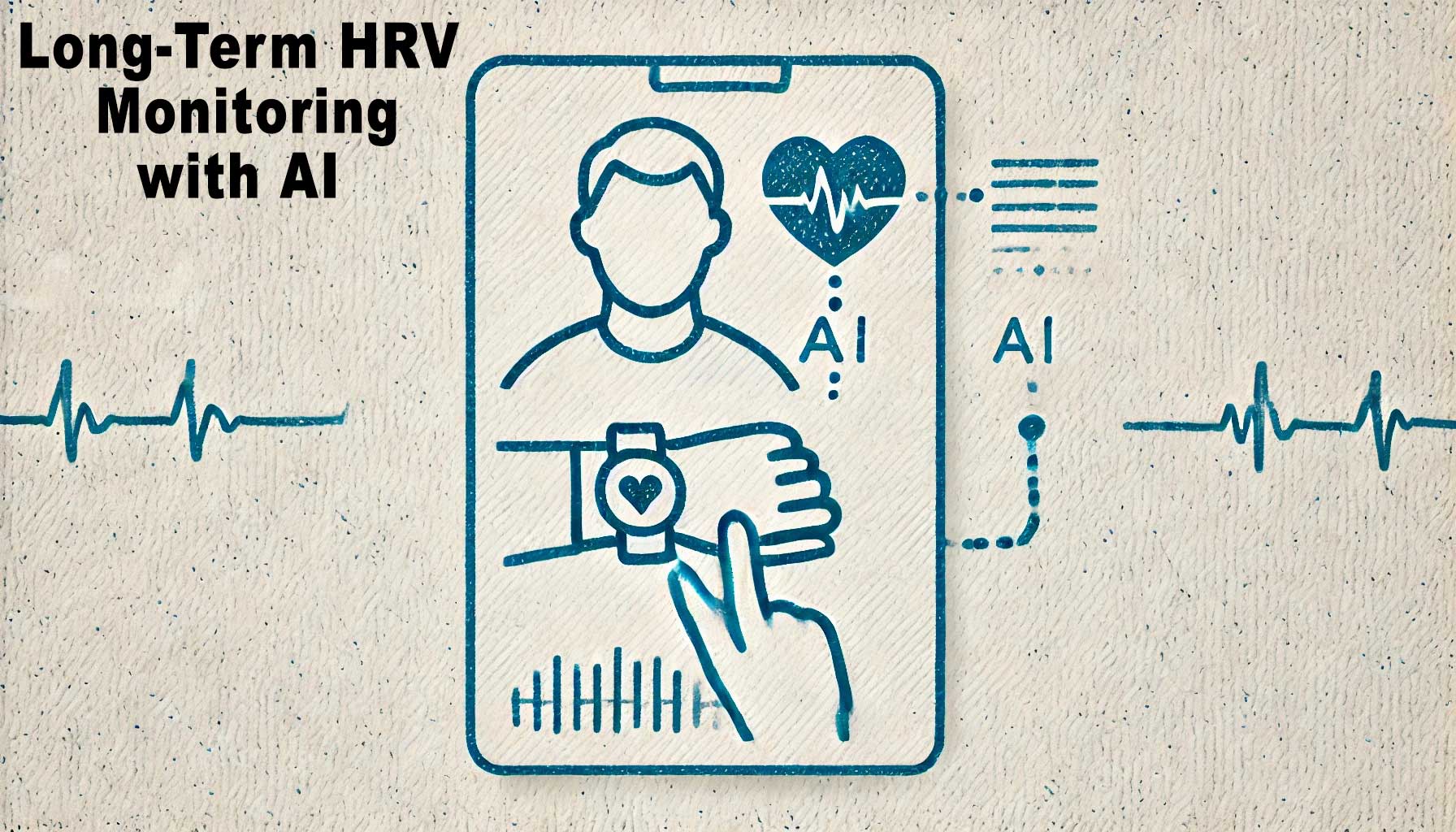Introduction
Heart Rate Variability (HRV) isn’t just a number—it’s a key indicator of how your autonomic nervous system is functioning. It tells us how your body handles stress, recovers from exertion, and maintains overall balance. However, capturing the true picture of HRV requires more than just a single measurement. That’s where long-term HRV monitoring comes in. By tracking HRV over extended periods, researchers can uncover patterns that offer deeper insights into health and disease.
But the road to gathering and interpreting long-term HRV data can be challenging. Technical limitations, data management issues, and the sheer volume of data make this task anything but simple. Fortunately, artificial intelligence (AI) is stepping up to these challenges, offering new ways to process and analyze HRV data effectively.
This article is part one of a series that will explore the intricacies of long-term HRV monitoring. We’ll cover everything from the basic importance of long-term data collection to the role of AI in extracting meaningful insights from complex datasets.

Why Long-Term HRV Monitoring Matters
HRV is dynamic. It changes with stress, physical activity, sleep quality, and even the time of day. Short-term measurements may miss critical variations, giving only a partial view of what’s happening inside the body. In contrast, long-term HRV monitoring offers a continuous look at these fluctuations, helping to reveal patterns that are crucial for understanding chronic conditions, mental health, and even sports performance.
Take chronic disease management as an example. Long-term HRV data can provide early warning signs before physical symptoms emerge. Similarly, in mental health, continuous HRV tracking might help identify correlations between daily stressors and long-term well-being, allowing for more personalized treatment plans.
Challenges in Long-Term HRV Monitoring
Despite its potential, long-term HRV monitoring is not without its difficulties. The reliability of wearable devices over extended periods is a significant concern. Issues like sensor degradation, battery life, and data accuracy can all impact the quality of the data collected.
Then there’s the challenge of managing the data itself. Long-term HRV monitoring generates large datasets that require sophisticated systems for storage, processing, and analysis. Data inconsistencies, such as missing values or noise, can further complicate the process.
This is where AI comes into play. By applying advanced algorithms, AI can sift through massive amounts of data to identify patterns, correct inconsistencies, and even predict future health outcomes based on past trends. This capability not only enhances the accuracy of the data but also makes it more actionable.
In the next part of this series, we’ll delve deeper into how AI is transforming the field of HRV monitoring, making long-term data collection more feasible and insightful for researchers. Stay tuned as we explore the cutting-edge technologies that are shaping the future of HRV research.

AI’s Role in Transforming Long-Term HRV Monitoring
The challenges of long-term HRV monitoring – data accuracy, volume, and complexity – are significant, but they’re not insurmountable. Artificial Intelligence (AI) is proving to be a game-changer in this field, offering solutions that not only address these challenges but also open up new possibilities for research.
- Enhancing Data Accuracy and Consistency: One of the primary concerns with long-term HRV monitoring is maintaining data accuracy over extended periods. Wearable devices, while convenient, are prone to issues like sensor drift, battery depletion, and data noise. AI algorithms, however, can correct for these inconsistencies. By analyzing large datasets, AI can detect and adjust for anomalies, ensuring that the HRV data remains reliable over time. For example, AI can filter out noise from the data caused by movement or poor sensor contact, allowing researchers to focus on the true HRV signals. This ability to clean and standardize data is crucial, especially when dealing with long-term datasets where even small errors can accumulate and skew results.
- Managing and Analyzing Large Datasets: The sheer volume of data generated by long-term HRV monitoring is another challenge. Traditional methods of data analysis can quickly become overwhelmed by the amount of information, leading to delays in processing and interpretation. AI, with its capacity to handle big data, offers a solution. Machine learning models can process large datasets more efficiently than traditional statistical methods. They can identify patterns and trends that might be missed by human analysts, providing deeper insights into how HRV changes over time. Additionally, AI can automate the analysis process, saving researchers valuable time and resources. For instance, AI can be used to predict health outcomes based on historical HRV data. By recognizing patterns that correlate with certain conditions, AI can offer early warnings or suggest potential interventions, making the data not just informative but also actionable.
- Enabling Personalized Health Insights: Perhaps one of the most exciting applications of AI in long-term HRV monitoring is its ability to provide personalized health insights. By continuously analyzing HRV data in conjunction with other health metrics, AI can tailor recommendations to individual needs. This personalized approach is particularly beneficial in fields like sports science and mental health, where individual variability is high. For example, an athlete’s HRV data can be used to optimize their training regimen, ensuring they are not overtraining and are recovering adequately between sessions. Similarly, in mental health, AI can help identify stress patterns unique to an individual, enabling more effective management strategies.

Looking Forward: The Future of HRV Monitoring
As AI technology continues to evolve, its role in HRV monitoring is likely to expand. Future developments may include even more sophisticated algorithms capable of integrating HRV data with other biometric data, such as sleep patterns, physical activity, and even environmental factors. This holistic approach could provide an unprecedented level of insight into human health, making long-term HRV monitoring a cornerstone of personalized medicine.
In conclusion, AI is not just addressing the challenges of long-term HRV monitoring; it’s revolutionizing the field. By enhancing data accuracy, managing large datasets, and providing personalized insights, AI is transforming how we understand and utilize HRV data. As we continue this series, we’ll explore these innovations in more detail, offering a roadmap for researchers looking to leverage AI in their HRV studies.
Stay tuned for the next article in our series, where we’ll dive into the best practices for designing studies that incorporate long-term HRV monitoring, including tips on participant selection, data collection methods, and maintaining data integrity over time.
Call to Action
📅 If you want to learn more about Fibion’s solution for measuring HRV, do not hesitate to book a video call with our expert Dr. Miriam Cabrita.

🔍 You may also discover other valid and reliable products in our portfolio, such as the Fibion Research, Fibion Vitals, Fibion Sleep, Fibion Sens, Fibion Emfit, and Fibion Circadian, all designed to assist in research measuring physical activity, sedentary behavior, and sleep.
Frequently asked questions about this topic:
Why is long-term HRV monitoring important? +
Long-term HRV monitoring provides a continuous view of how the autonomic nervous system responds to various factors like stress, sleep, and physical activity. It helps identify patterns that short-term measurements might miss, offering deeper insights into health and disease management.
What are the challenges of long-term HRV monitoring? +
Key challenges include maintaining data accuracy over time, managing the large volume of data generated, and dealing with inconsistencies like noise and missing values. These issues require sophisticated data management and analysis techniques to ensure reliable results.
How does AI enhance long-term HRV monitoring? +
AI improves long-term HRV monitoring by correcting data inconsistencies, managing large datasets, and identifying hidden patterns. It can filter out noise, predict health outcomes, and provide actionable health insights based on HRV trends.
What are the benefits of using AI for personalized health insights? +
AI can continuously analyze HRV data alongside other health metrics to provide tailored recommendations for stress management, exercise routines, and recovery. This personalized approach is valuable in fields like sports science and mental health.
What future developments in AI and HRV monitoring can we expect? +
Future trends may include integrating HRV data with other biometric data like sleep and activity levels, using advanced AI algorithms for real-time feedback, and developing more sophisticated wearable technologies for comprehensive health monitoring.















